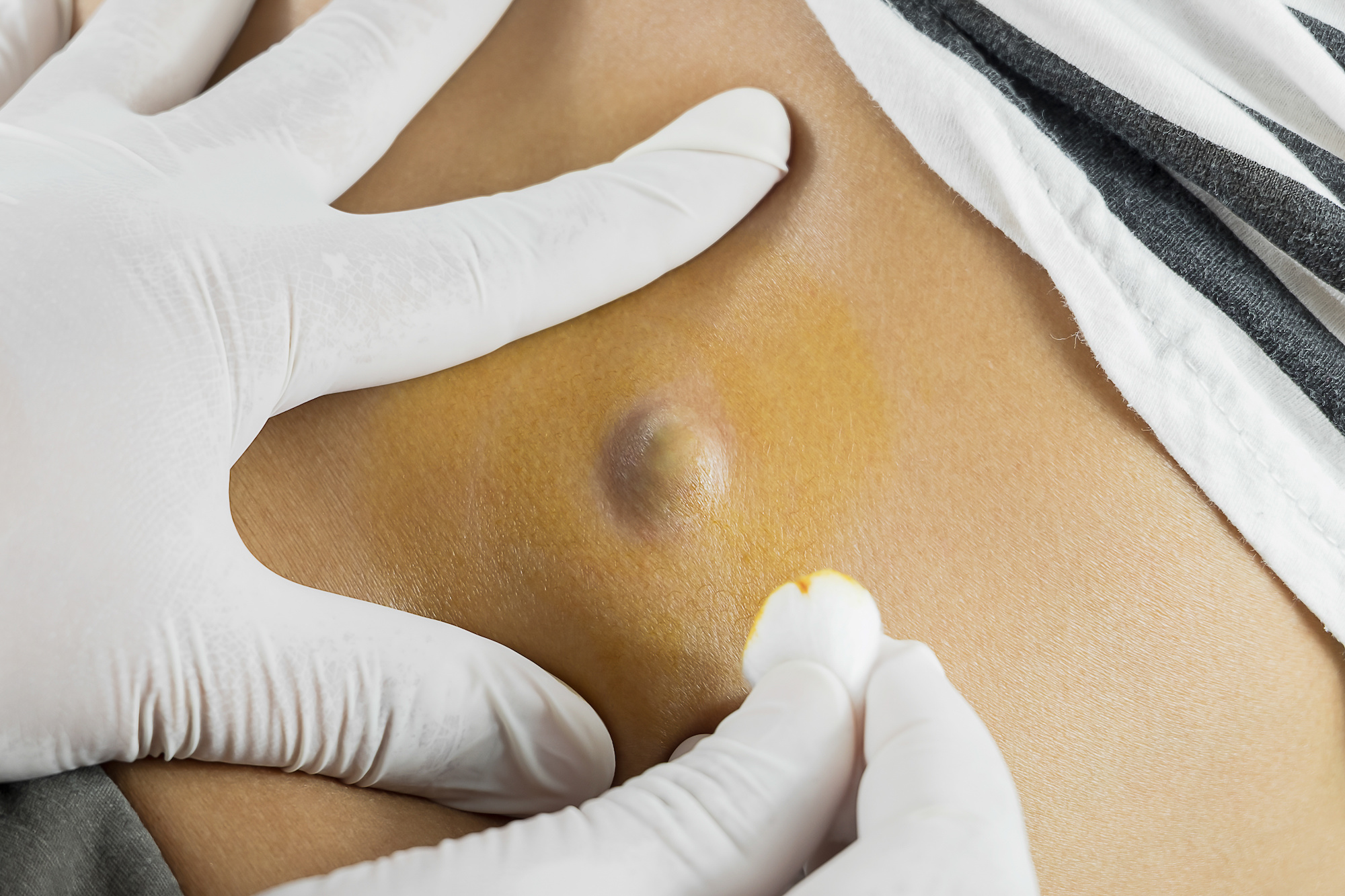 Is This A Cyst?
Is This A Cyst?
Your doctor tells you that you have a cyst in the skin. What does this mean?
A cyst is a closed capsule or sac-like bump, much like a tiny balloon beneath your skin,” shares Dr. Azeen Sadeghian, board certified dermatologist at Sanova Dermatology in Baton Rouge, LA. A cyst’s usually has a distinct boundary that separates its contents from the nearby tissue. Cysts are filled with liquid, semi-solid or caseous material – they can be tiny or large, painful or asymptomatic, and can develop throughout the body, including in other tissues other than the skin. Many cysts are not cancerous Because a cyst can be found in many different organs of the body, symptoms depend on its location.
Types of Cysts.
There are manydifferent kinds of cysts. But the most common types of cysts affecting the skin are sebaceous (epidermal) cysts, pilar (trichilemmal) cysts, pilonidal cysts and even milia.
• Sebaceous cysts. These cysts are found most commonly on the face, ears, neck, back and scalp. “Usually non-cancerous swellings in a sebaceous gland, they feel like nodules underneath the skin and are filled with yellowish cheese-like sebum,” explains Dr. Sadeghian. They sometimes become large enough to be painful and unsightly. Sebaceous cysts often arise from a blocked follicle, in severe acne or from a penetrating injury.
• Pilar cysts. Looking much like sebaceous cysts, trichilemmal cysts occur mostly on the scalp and are usually multiple. “The membrane wall of a trichilemmal cyst is thicker than that of a sebaceous cyst, making the trichilemmal cyst easier to remove in one solid piece,” Dr. Sadeghian states.
• Pilonidal cysts. Pilonidal cysts contain hair and skin debris and appear near the tailbone in the lower back. Because of their location, pilonidal cysts are often a nuisance. They can drain or becoming tender or painful, especially when sitting.
• Milia. Filled with keratin, milia are often found on the face. They look like small firm white “bumps” and may be confused with persistent whiteheads. Milia can occur in infants and young children but usually resolve on their own in weeks or months. Adults may wish to have them removed for cosmetic reasons.
Treatment of Cysts.
Most cysts are easily palpated by a dermatologist. “Depending on cause, location and discomfort level, your doctor may sometimes suggest drainage, treatment, or removal of the cyst or cysts,” says Dr. Sadeghian. Others may need to be surgically removed. Ideally, a cyst should be removed before it ruptures – rupturing may allow the cyst to reform, lead to more pockets of the cyst forming or result in scarring at the cyst site. But if the cyst is not ruptured, it often can be easily removed in one piece, allowing the wound to heal quickly and completely.
Squeezing or popping a cyst at home is never a good idea. It may cause the cyst to enlarge, scar, rupture beneath the skin, or become inflamed or infected.
Contact Us
If you suspect you have a cyst, contact us today. Our skilled dermatologists know the best treatment for all your skin needs.
